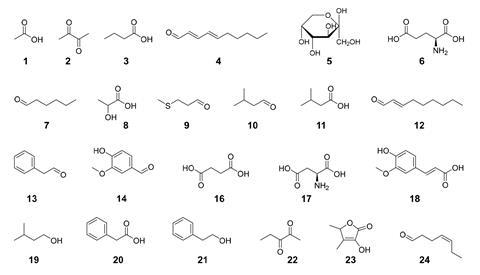10 key taste compounds and 11 aroma compounds are responsible for the unique flavour of sourdough bread. Researchers from the Technical University of Munich, Germany, who made the findings, say that this knowledge could help bakers to control the quality of their breads and make their products more consistent. The work was presented at the autumn meeting of the American Chemical Society (ACS) held in San Francisco, California and virtually.
The research relied on sensomics, which applies chromatography, mass spectrometry and related methods to isolate the flavour-active compounds in food, determine their structures, and identify how they contribute to taste. The team developed a method to rapidly analyse the key tastants and odorants in one single liquid chromatography–mass spectrometry run.
What is unique about sourdough breads is that they use a ‘starter’ – a self-sustaining fermentation of flour, water, wild yeasts and bacteria that produce lactic and acetic acids and cause the bread’s dough to rise.
The TUM researchers gathered both yeast-based and sourdough breads locally, made with either rye or wheat flours. They found key sourdough compounds like lactic and acetic acids in the yeast-based breads, but in much smaller amounts.

After isolating, identifying and quantifying the basic taste and flavour compounds of a sourdough bread crumb, the researchers calculated odour and taste activity values to determine which compounds contribute the largest sensory responses when the bread is eaten.
The team then compared the taste profiles and carried out ‘omission tests’ – where a panel of taste testers were given samples in which single compounds were removed, to see whether they would discern a significant difference, explained Laura Eckrich, a Munich-based analytical chemist and graduate student who presented the work at the ACS meeting.
‘We found out that just 10 key tastants and 11 key odorants are enough to completely recreate the flavour of sourdough bread,’ Eckrich said. ‘The next step is to apply this method,’ she continued. ‘We bought not just sourdough bread but also yeast breads – we tried to compare them and also analyse not just the bread crumb but also the bread crust,’ she continued. ‘We could see a lot of differences in the aroma and taste compounds.’

















No comments yet